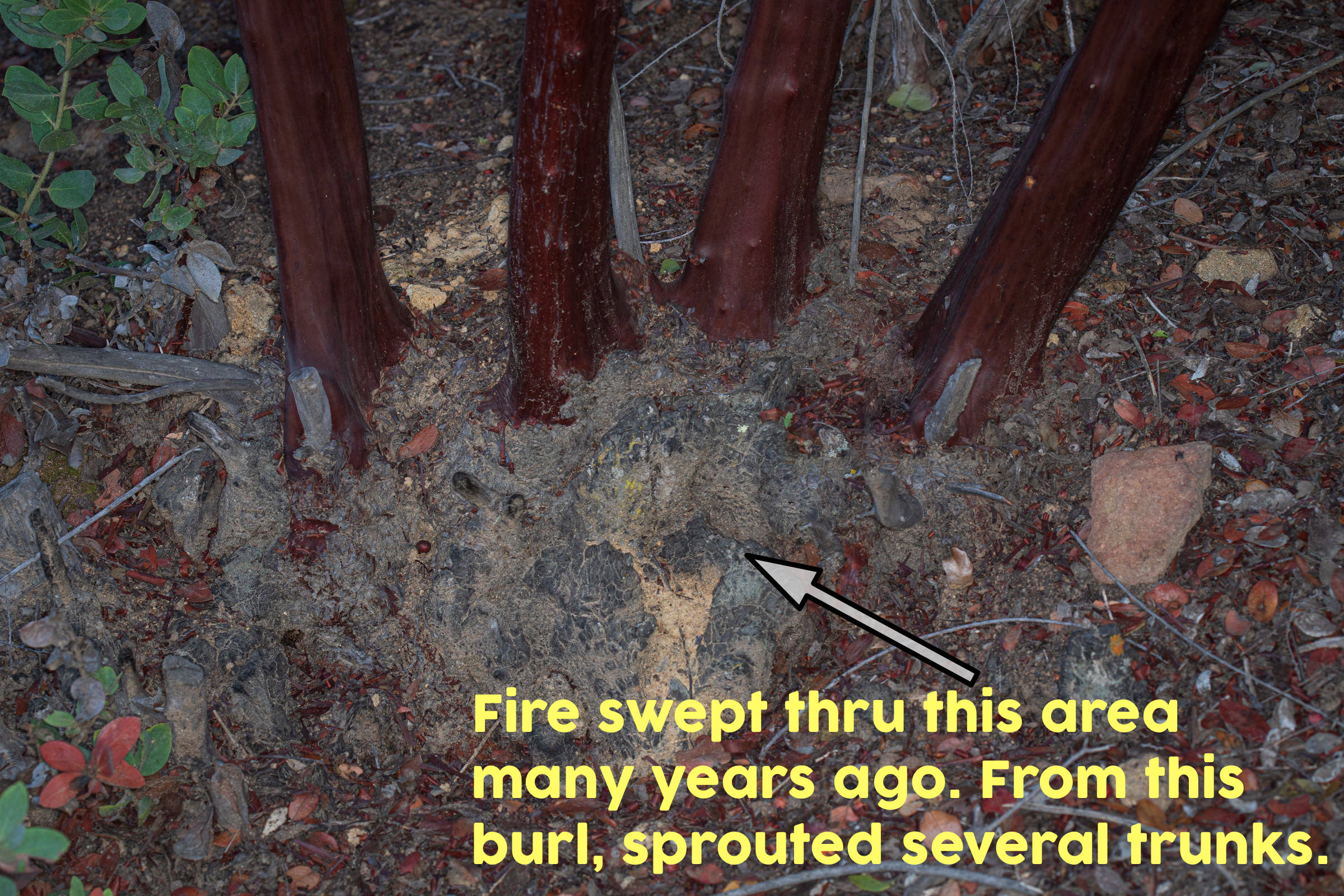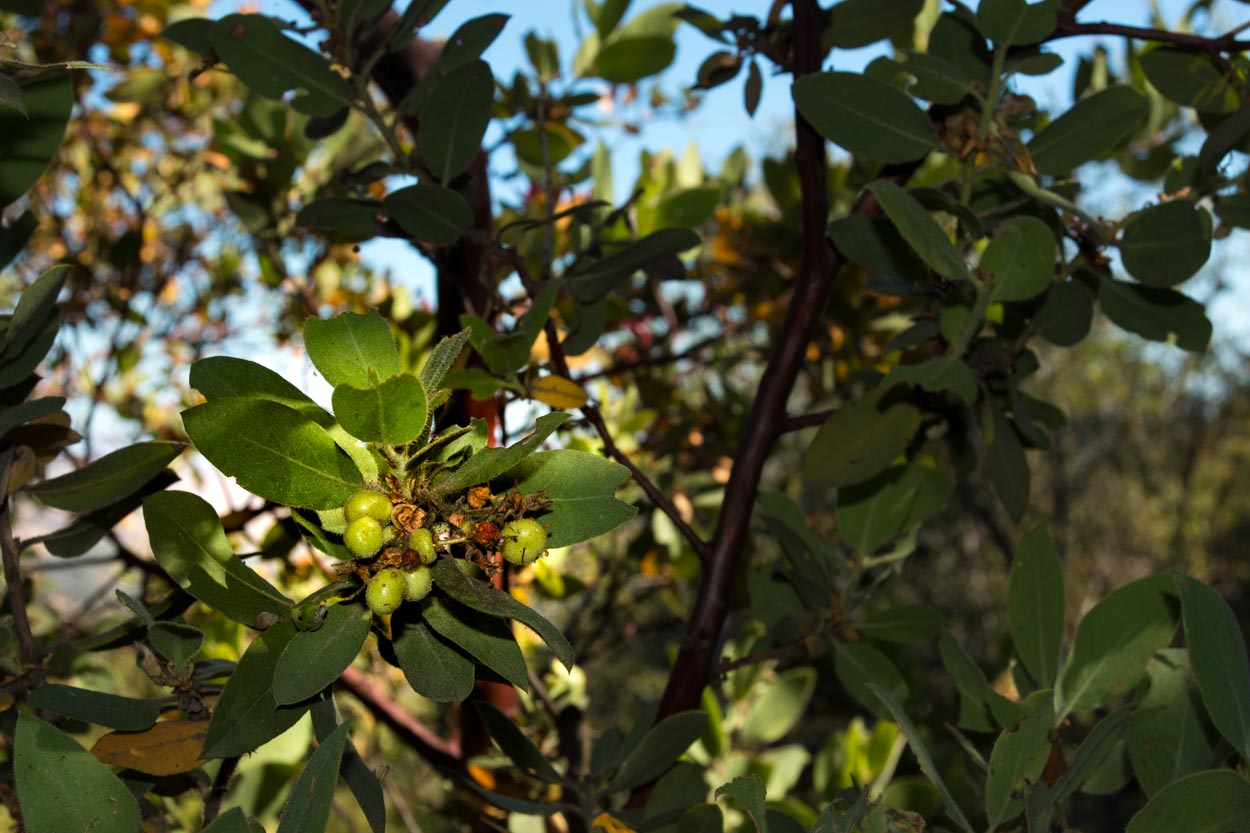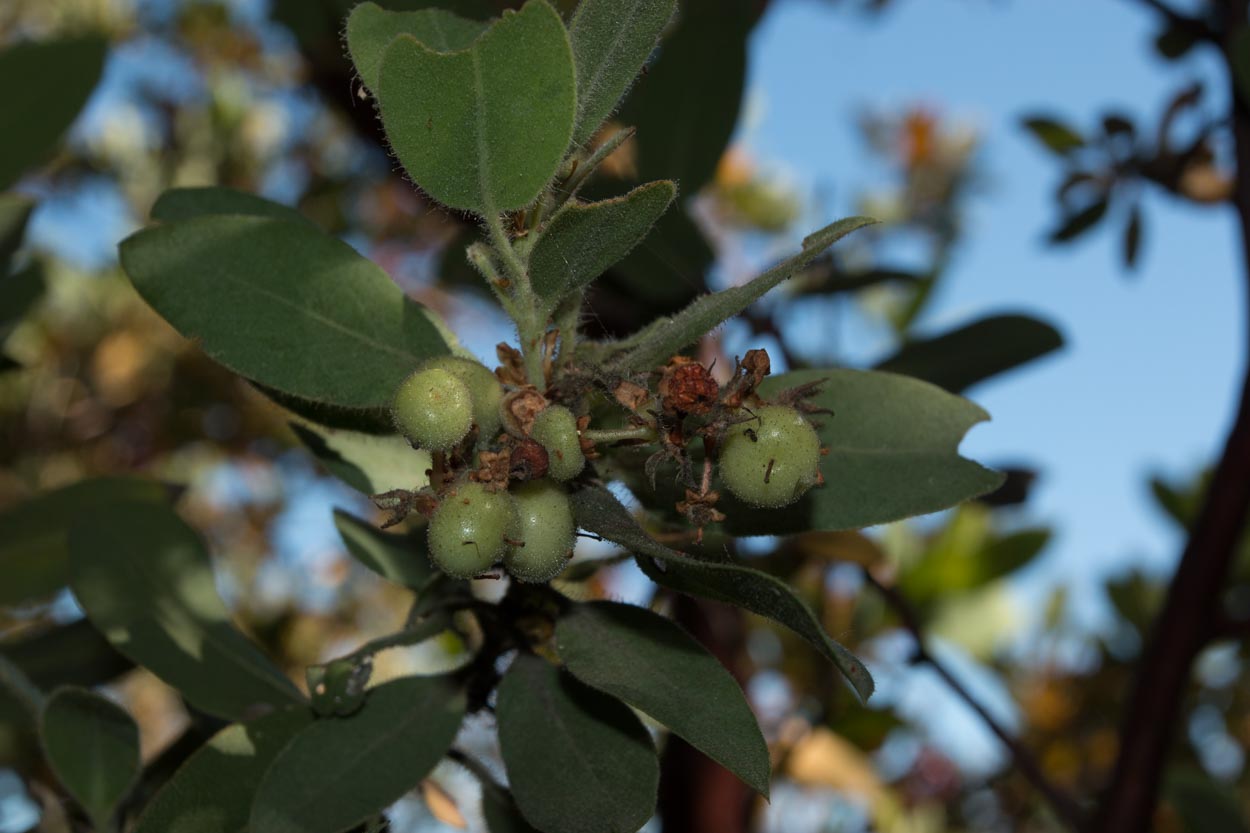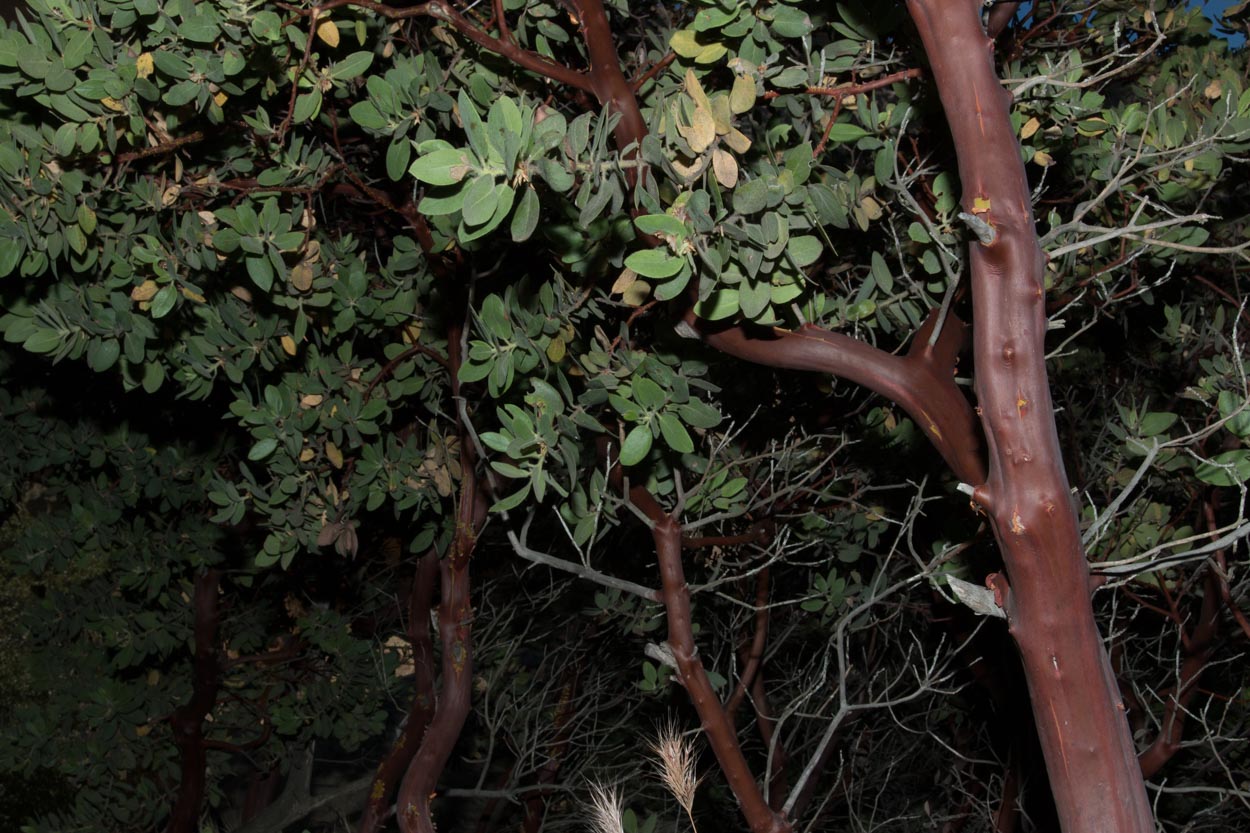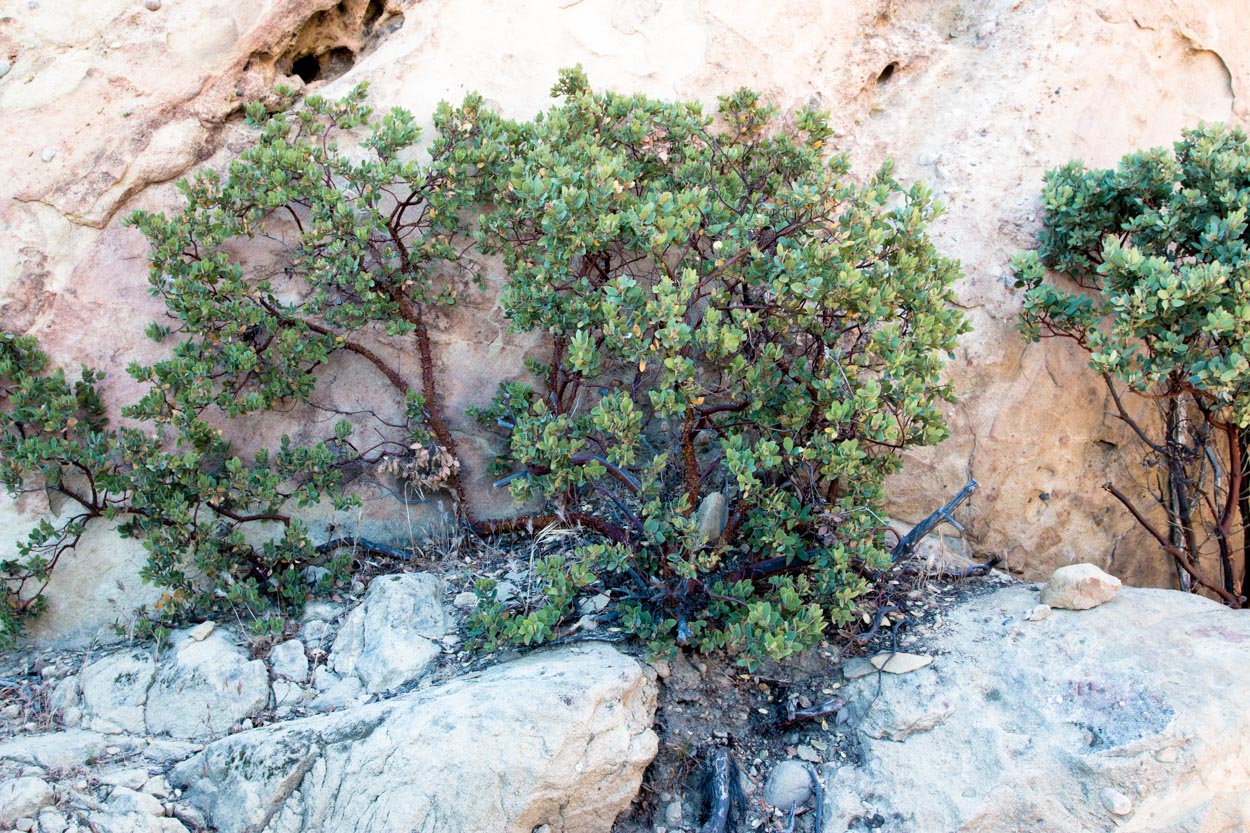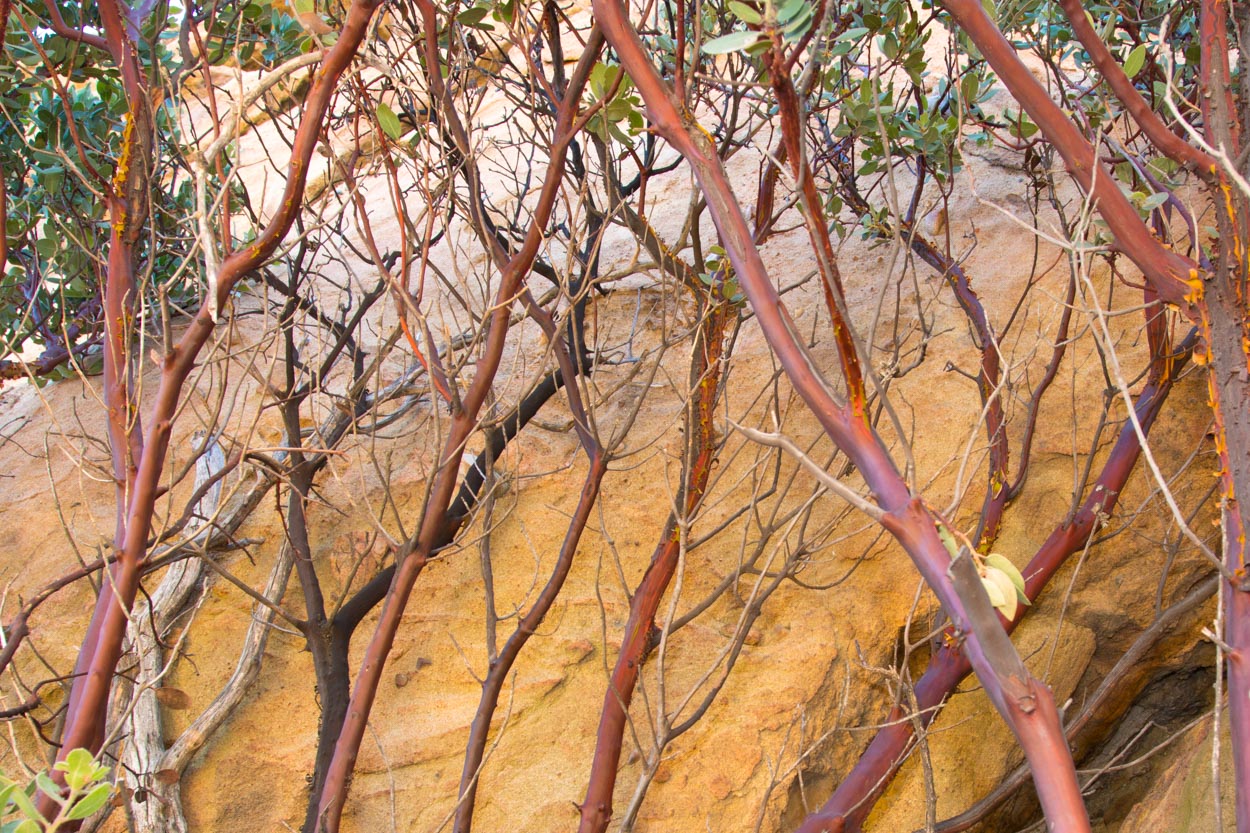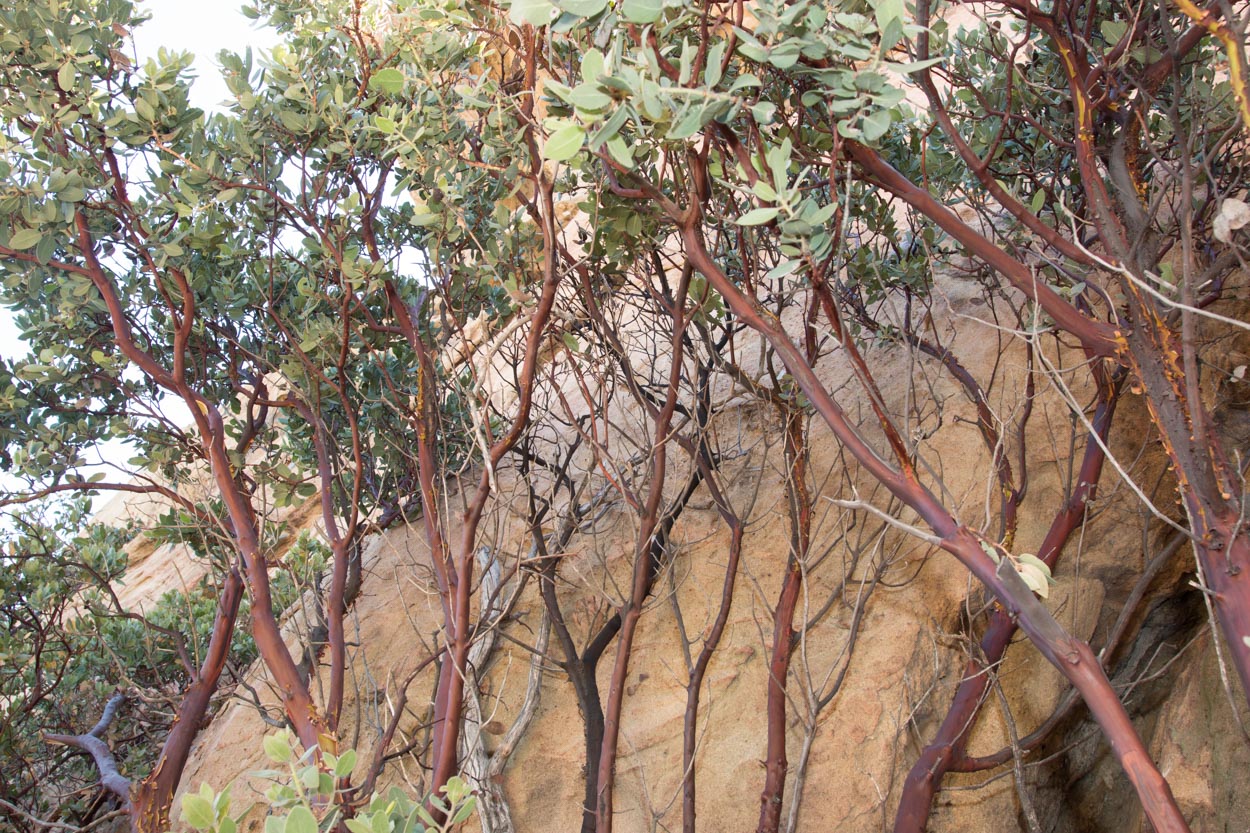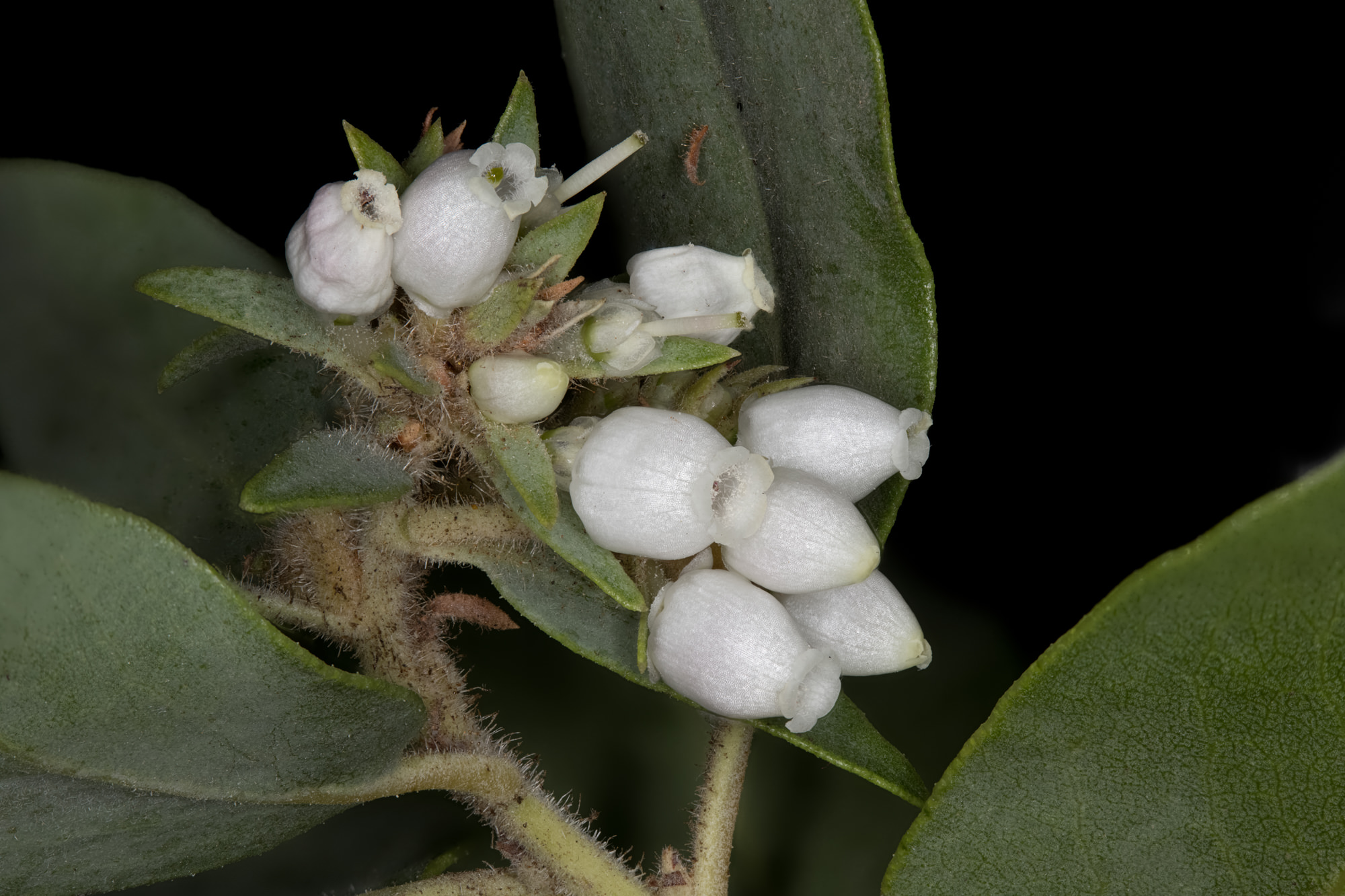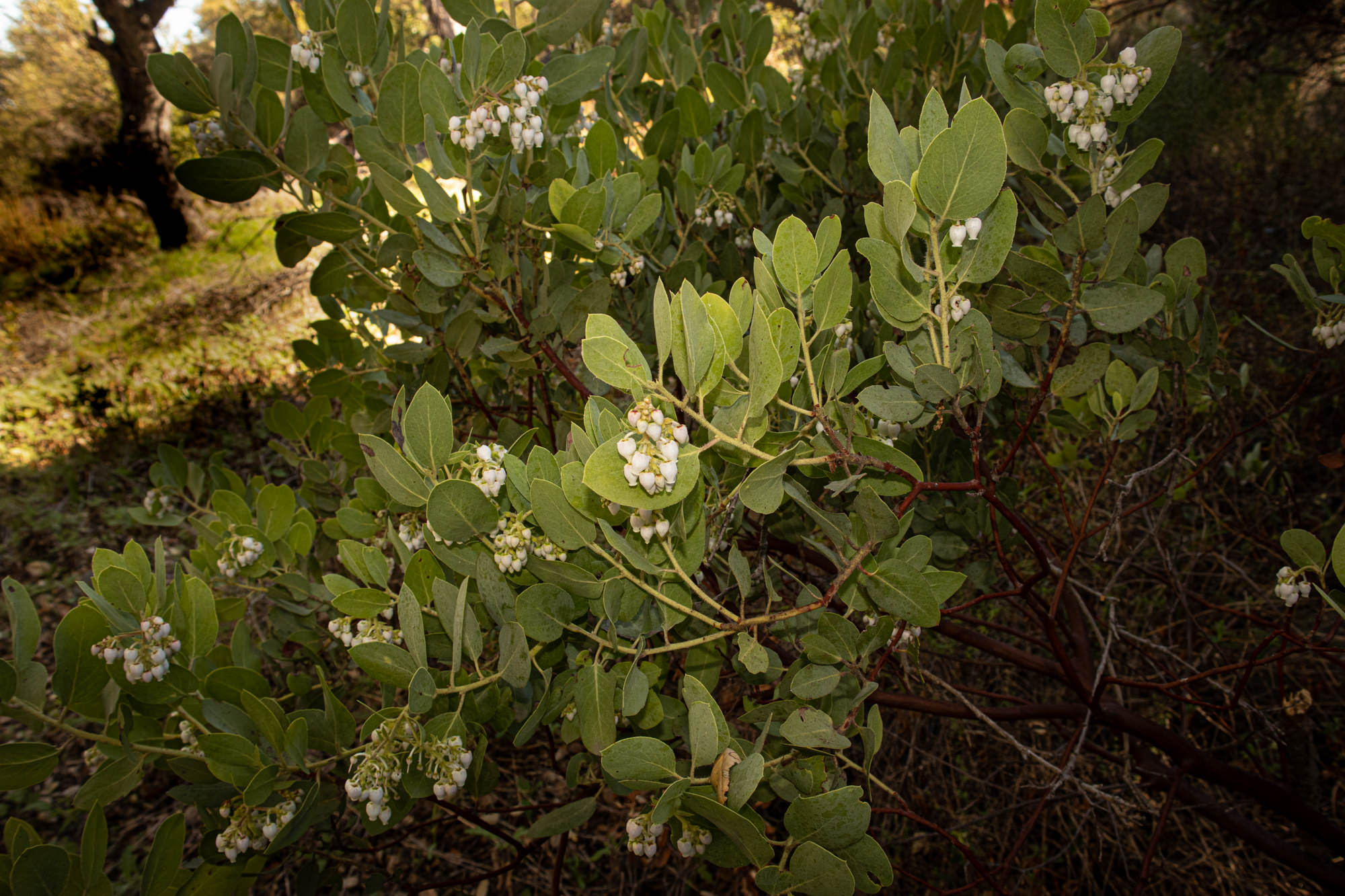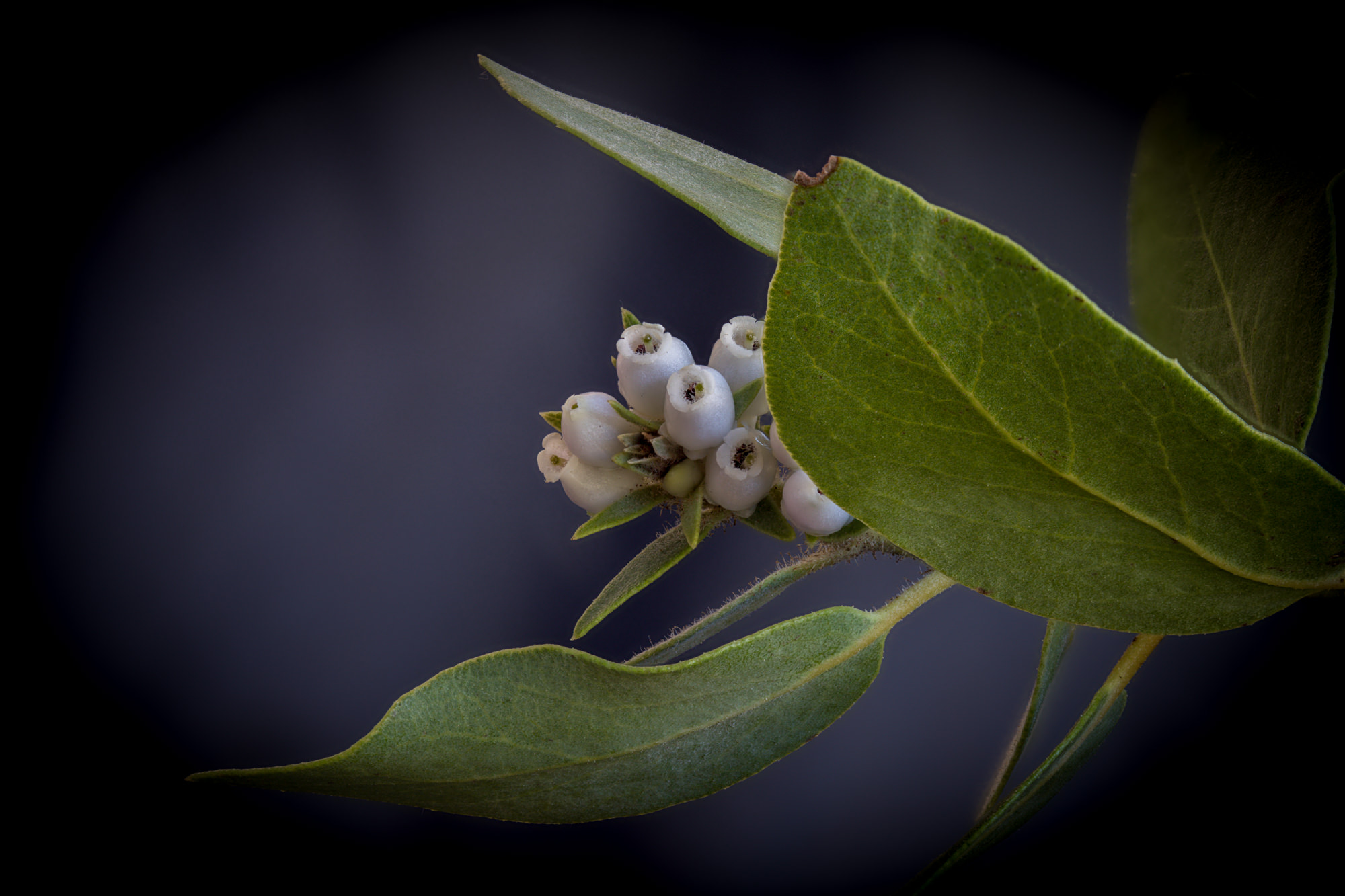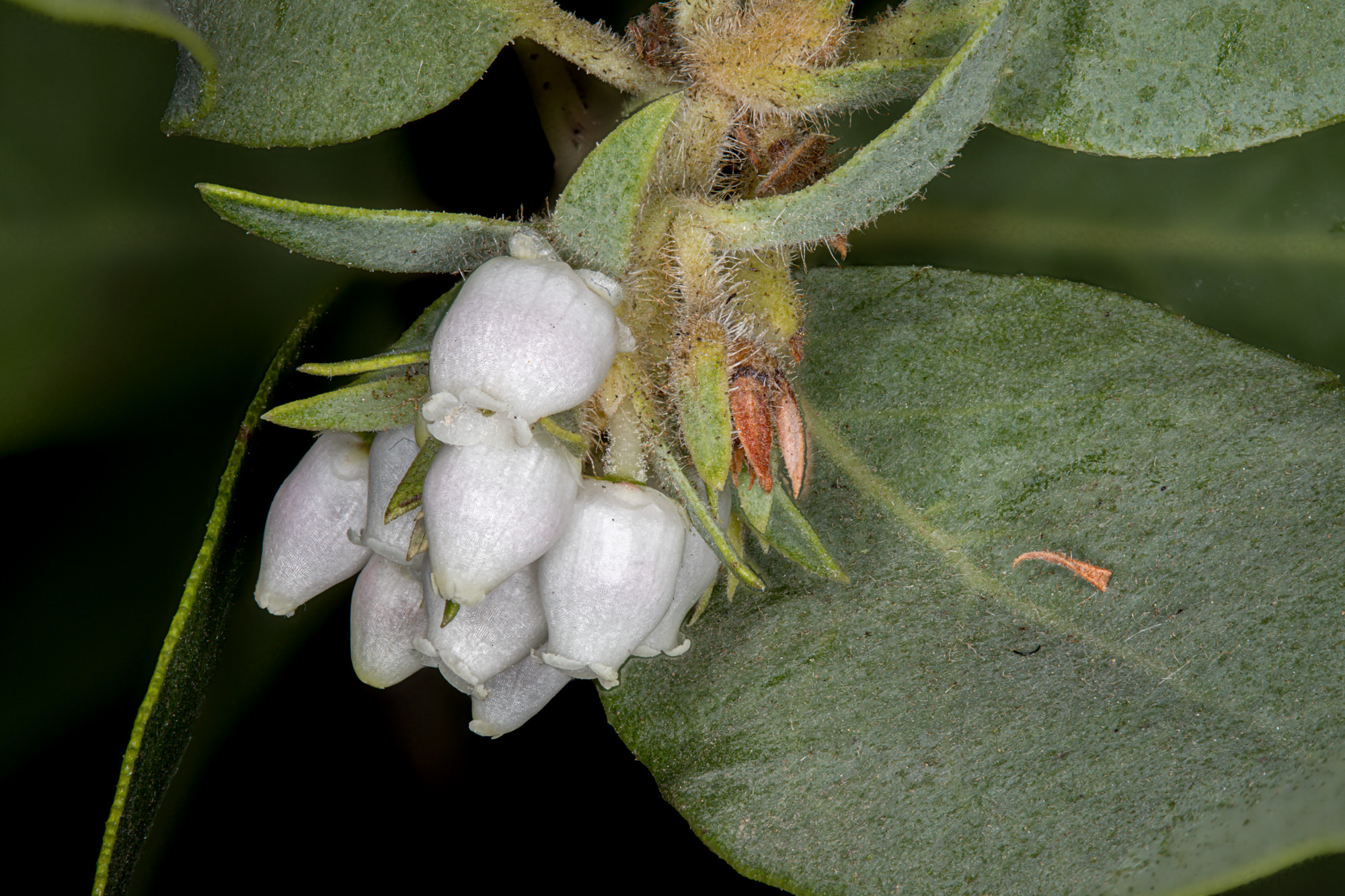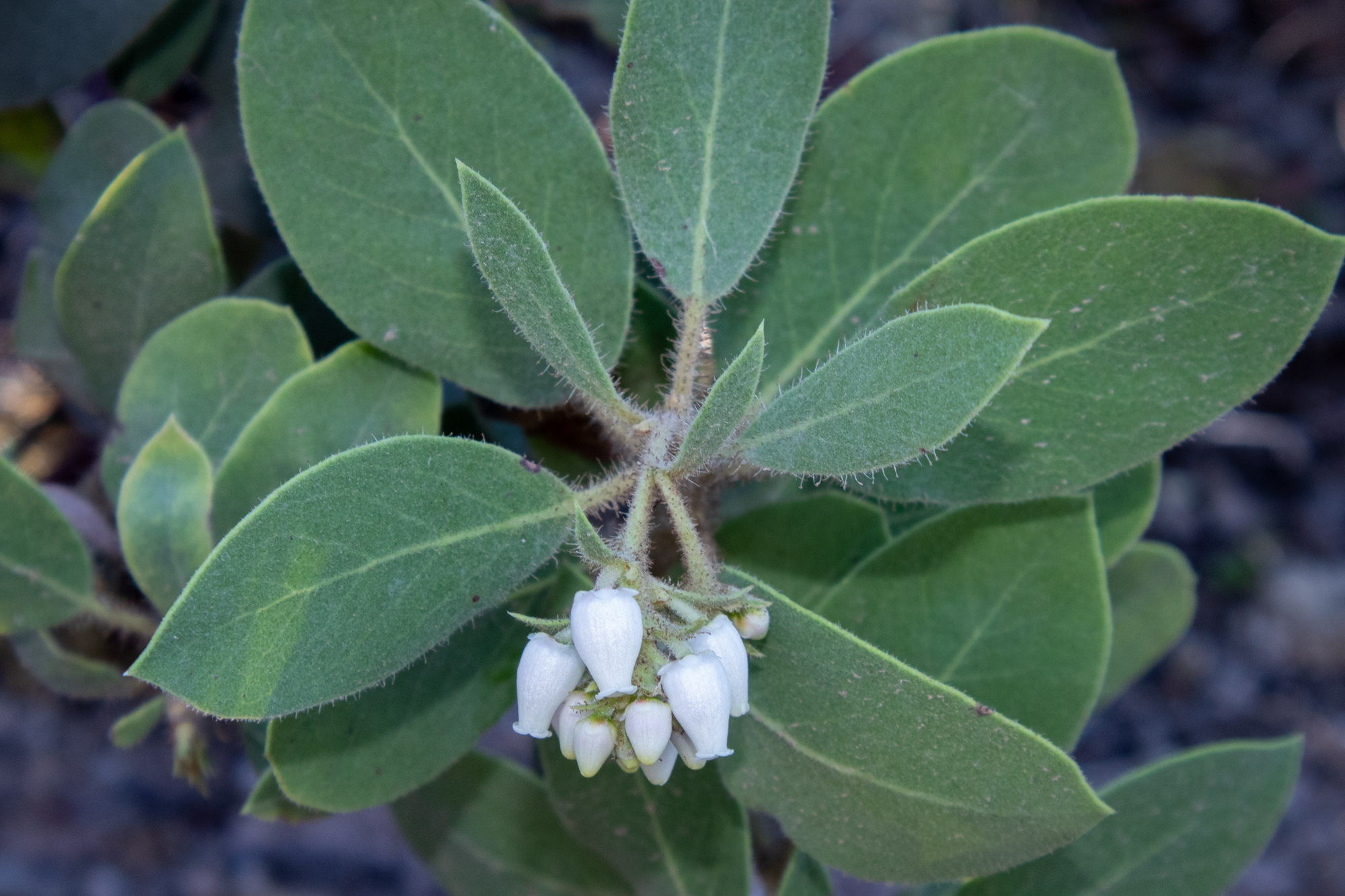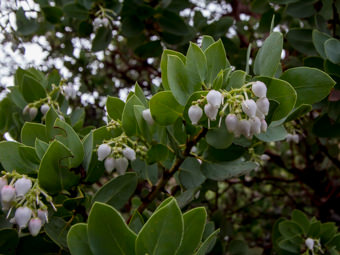Eastwood Manzanita
- Arctostaphylos glandulosa
| Common Name(s): | Eastwood Manzanita |
| Scientific Name: | Arctostaphylos glandulosa |
| Family: | Ericaceae (Heath) |
| Plant Type: | Shrub |
| Size: | Up to 20 feet |
| Habitat: | Chaparral, rocky slopes and ridges |
| Blooms: | November to February |
| Fire Response: | Stump Sprout or Seed |
Arctostaphylos glandulosa, commonly called Eastwood manzanita, is an evergreen shrub native to California. This is one of the first plants that many people learn the name of. The stiff and often crooked branches of dense, fine-grained, fissured wood, with smooth, polished, shedding, reddish bark are quite distinct. In the Santa Monica Mountains this plant can found above 1500 feet elevation on northern slopes.
The Santa Monica Mountains have two species of Manzanita and they can often be found growing near each other. The differences between the two are subtle but once you look close enough there are a few clues that help identify the species. Here are a few things to look for:
- Arctostaphylos glauca
- Look where the plant comes out of the ground - is there a burl? Absence of a burl on older plants is a diagnostic trait for this species. This plant typically has a single trunk growing out of the ground.
- Look at the leaves and stems of the plant - are there lots of hairs? No? This plant does not have hairs on leaves and stems.
- If fruit is present, this plant lives up to its common name - bigberry manzanita.
- Look at the height of the plant - can grow to 20 feet
- Arctostaphylos glandulosa
- Look where the plant comes out of the ground - is there a burl? Presence of a burl is a diagnostic trait for this species.
- Look at the leaves and stems of the plant - are there lots of hairs? This plant has numerous hairs on leaves and stems.
- Look at the height of the plant - usually no taller than 10 feet
White, urn-shaped flowers appear in winter - interestingly enough, the plant presets the next years blooms from the previous season. Manzanitas are buzz pollinated by bumblebees - the bee vibrates its thorax at a specific frequency which causes the flower to release its pollen. In summer, the small flowers are followed by reddish-brown, sticky berries which coyotes and other animals feast on (Arctostaphylos translates to "bear-grape"). Blooming time normally ranges from December to April. The artistic, crooked nature of Manzanita's branches is caused by its flowering; after bloom, branches find a new growth path above the flowers, rather than continuing in the same direction. With manzanitas and other smooth-bark trees, the bark layer peels away each year. This prevents fungi, parasites, and epiphytes, such as mosses and lichens, from persisting on the tree’s trunk and stems. Leaves are dull green or dark green, hairy, rigid, 1-2 inches long, and oval and pointed. Leaves are nearly always held perpendicular to the sun’s face, an adaptation to limit moisture loss during the summer. Manzanita means "little apple" in Spanish, and its berries have been used by humans for food and drink. Its leaves had various medicinal uses, alleviating the pain and discomfort of headaches, sores and even poison oak.
Manzanita varieties would be attractive plants to have in your garden. If you are so inclined, you may wish to consult the book California Native Plants for the Garden (Check Amazon.com for more), which devotes 8 pages to the subject. Manzanitas prefer acidic, well-draining soil and a well ventilated location.
Link to Calflora.net - the best source of this fascinating information.
Name Origin: Arctostaphylos – from two Greek words arktos, "bear," and staphule, "a bunch of grapes," referring to the common name of the first-known species, and also perhaps alluding to bears feeding on the grape-like fruits.
glandulosa – means "provided with glands," referring to the secreting structures on the surface ending in hairs or other plant parts.
Eastwood: After Alice Eastwood (1859-1953), botanical curator for the California Academy of Sciences
Contributed by Liz Baumann - Revised by George Sherman
Featured Plants in the Ericaceae (Heath) Family:
Last modified: August 21 2024 15:18:55.
Number of Images: 13
Image Size Total: 6,126,492
References:
Wildflowers of the Santa Monica Mountains, by Milt McAuleyFlowering Plants: The Santa Monica Mountains, Coastal and Chaparral Regions of Southern California, by Nancy Dale
Chumash Ethnobotany: Plant Knowledge Among the Chumash People, by Jan Timbrook
Leaf Shapes Primer - Botanical Terms for Leaves: - Link

